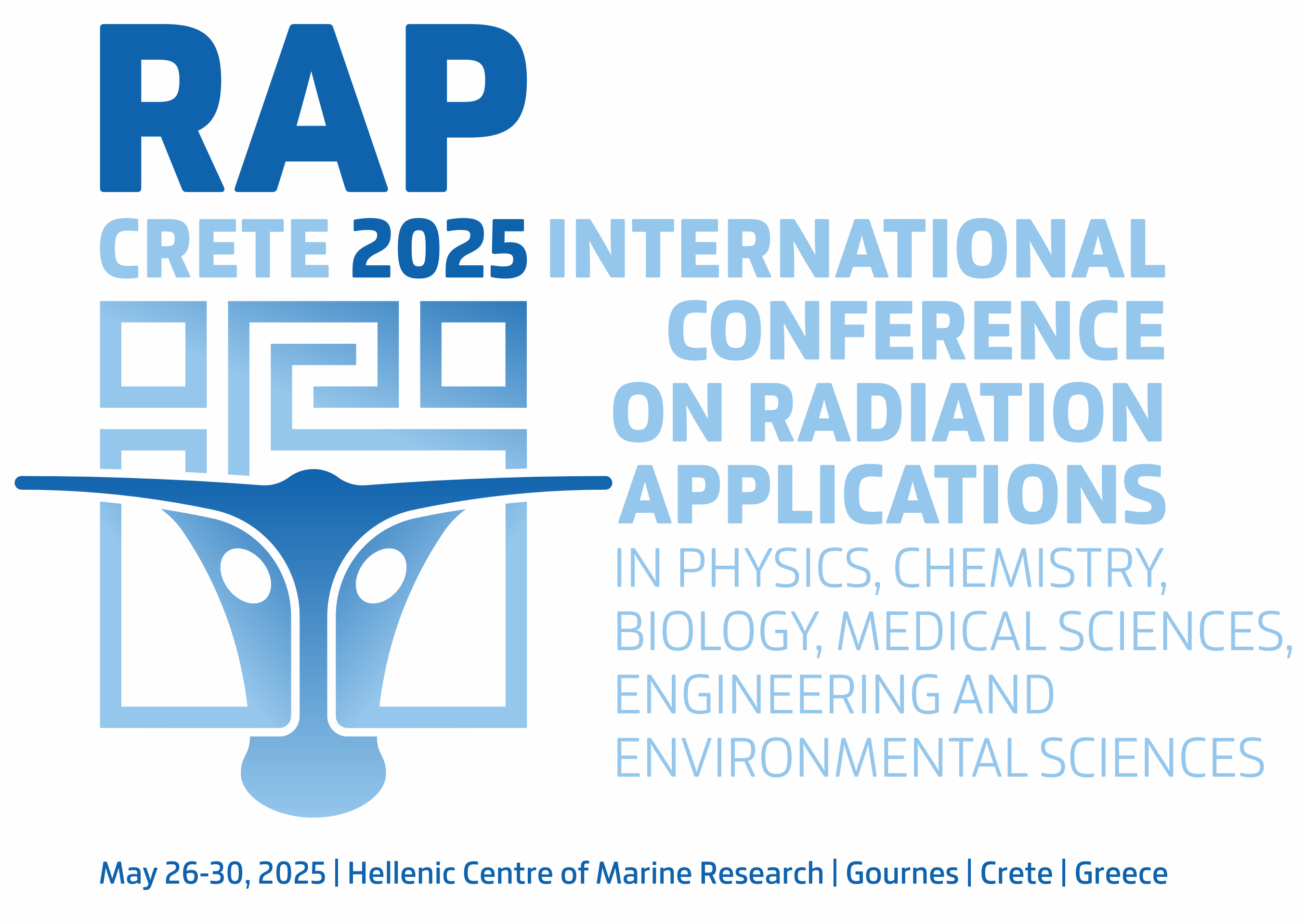Vol. 4, 2019
Medical Physics
RADIATION-INDUCED SKIN PIGMENTATION AFTER ACCELERATED PARTIAL BREAST IRRADIATION: DOSE-VOLUME HISTOGRAM ANALYSIS
Alena Demianovich, Dmitriy Sanin, Natalia Borysheva, Valeriya Martynova, Sergey Ivanov, Andrey Kaprin
Pages: 187–190
DOI: 10.37392/RapProc.2019.38
Abstract | References | Full Text (PDF)
This research demonstrates the treatment of breast cancer with high dose rate (HDR) brachytherapy in the 34 Gy mode performed in 10 twice-a-day treatments, six hours apart over a period of five days. According to the protocol the maximum allowable radiation exposure for the skin did not exceed 34 Gy. By May 2019, 28 patients were treated with a mean follow-up of 10.5 months, with the median of the study being 11 months. Among these patients, 7 had shown toxic effects on the skin in the form of pigmentation. For these patients parameters such as Dmax, D0.01сс, D0.1сс, D1сс, and D2сс were analysed. Among the patients, some had the same values or higher but did not exhibit toxic effects. Therefore, the expected effects, as well as the results of treatment, are very individual and dependent on many factors. We can only try to minimise them. As a result, it is necessary to show care with values of Dmax ≥ 33 Gy, D0.01сс ≥ 32, D0.1сс ≥ 30, D1сс ≥ 27 and D2сс ≥ 24.
- Breast, IARC, Lyon, France, 2018.
Retrieved from: https://gco.iarc.fr/today/data/factsheets/cancers/20-Breast-fact-sheet.pdf
Retrieved on: Nov. 15, 2018 - J. A. Latorre et al., “Accelerated partial breast irradiation in a single 18 Gy fraction with high-dose-rate brachytherapy: preliminary results,” J. Contemp. Brachytherapy, vol. 10, no. 1, pp. 58 - 63, Feb. 2018.
DOI: 10.5114/jcb.2018.73994
PMid: 29619057
PMCid: PMC5881592 - S. Ahmad et al., “Comparison of tumor and normal tissue dose for accelerated partial breast irradiation using an electronic brachytherapy eBx source and an Iridium‐192 source,” J. Appl. Clin. Med. Phys., vol. 11, no. 4, pp. 155 - 161, Sep. 2010.
DOI: 10.1120/jacmp.v11i4.3301
PMid: 21081891
PMCid: PMC5720398 - M. Sinnatamby, V. Nagarajan, R. K. Sathyanarayana, G. Karunanidhi, V. Singhavajala, “Study of the dosimetric differences between 192Ir and 60Co sources of high dose rate brachytherapy for breast interstitial implant,” Rep. Pract. Oncol. Radiother., vol. 21, no. 5, pp. 453 - 459, Sep.-Oct. 2016.
DOI: 10.1016/j.rpor.2016.03.005
PMid: 27489516
PMCid: PMC4949742 - M. Oshaghi, M. Sadeghi, S. R. Mahdavi, A. R. Shirazi, “A Comparison of Skin Dose Delivered with MammoSite and Multicatheter Breast Brachytherapy,” J. Biomed. Phys. Eng., vol. 3, no. 4, pp. 133 - 138, Dec. 2013.
PMid: 25505759
PMCid: PMC4204506 - J. Lasota, R. Kabacińska, R. Makarewicz, “Dose estimation for different skin models in interstitial breast brachytherapy,” J. Contemp. Brachytherapy, vol. 6, no. 2, pp. 200 - 207, Jun. 2014.
DOI: 10.5114/jcb.2014.43167
PMid: 25097562
PMCid: PMC4105640 - K. Yoshida et al., “Case report of a dose-volume histogram analysis of rib fracture after accelerated partial breast irradiation: interim analysis of a Japanese prospective multi-institutional feasibility study,” J. Contemp. Brachytherapy, vol. 10, no. 3, pp. 274 - 278, Jun. 2018.
DOI: 10.5114/jcb.2018.76983
PMid: 30038649
PMCid: PMC6052388 - G. L. Smith et al., “Association between treatment with brachytherapy vs whole-breast irradiation and subsequent mastectomy, complications, and survival among older women with invasive breast cancer,” JAMA Oncol., vol. 307, no. 17, pp. 1827 – 1837, May 2012.
DOI: 10.1001/jama.2012.3481
PMid: 22550197
PMCid: PMC3397792 - J. Huo, S. H. Giordano, B. D. Smith, S. F. Shaitelman, G. L. Smith, “Contemporary Toxicity Profile of Breast Brachytherapy Versus External Beam Radiation After Lumpectomy for Breast Cancer,” Int. J. Radiat. Oncol. Biol. Phys., vol. 94, no. 4, pp. 709 - 718, Mar. 2016.
DOI: 10.1016/j.ijrobp.2015.12.013
PMid: 26972643 - J. W. Snider et al., “Projected Improvements in Accelerated Partial Breast Irradiation Using a Novel Breast Stereotactic Radiotherapy Device: A Dosimetric Analysis,” Technol. Cancer Res. Treat., vol. 16, no. 6, pp. 1031 - 1037, Jan. 2017.
DOI: 10.1177/1533034617718961
PMid: 28705082
PMCid: PMC5762064 - M. Akhtari et al., “Clinical outcomes, toxicity, and cosmesis in breast cancer patients with close skin spacing treated with accelerated partial breast irradiation (APBI) using multi-lumen/catheter applicators,” J. Contemp. Brachytherapy, vol. 8, no. 6, pp. 497 - 504, Dec. 2016.
DOI: 10.5114/jcb.2016.64830
PMid: 28115955
PMCid: PMC5241383 - V. Strnad et al., “ESTRO-ACROP guideline: Interstitial multi-catheter breast brachytherapy as Accelerated Partial Breast Irradiation alone or as boost - GEC-ESTRO Breast Cancer Working Group practical recommendations,” Radiother. Oncol., vol. 128, no. 3, pp. 411 - 420, Sep. 2018.
DOI: 10.1016/j.radonc.2018.04.009
PMid: 29691075 - C. Shah et al., “The American Brachytherapy Society consensus statement for accelerated partial-breast irradiation,” Brachytherapy, vol. 12, no. 4, pp. 267 - 277, Jul.-Aug. 2013.
DOI: 10.1016/j.brachy.2013.02.001
PMid: 23619524 - V. Strnad et al., “Recommendations from GEC ESTRO Breast Cancer Working Group (I): Target definition and target delineation for accelerated or boost Partial Breast Irradiation using multicatheter interstitial brachytherapy after breast conserving closed cavity surgery,” Radiother. Oncol., vol. 115, no. 3, pp. 342 - 348, Jun. 2015.
DOI: 10.1016/j.radonc.2015.06.010
PMid: 26104975 - T. Majora, et al, “Recommendations from GEC ESTRO Breast Cancer Working Group (II): Target definition and target delineation for accelerated or boost partial breast irradiation using multicatheter interstitial brachytherapy after breast conserving open cavity surgery,” Radiother. Oncol. vol. 118, no. 1, pp. 199 - 204, Jan. 2016.
DOI: 10.1016/j.radonc.2015.12.006
PMid: 26776444


